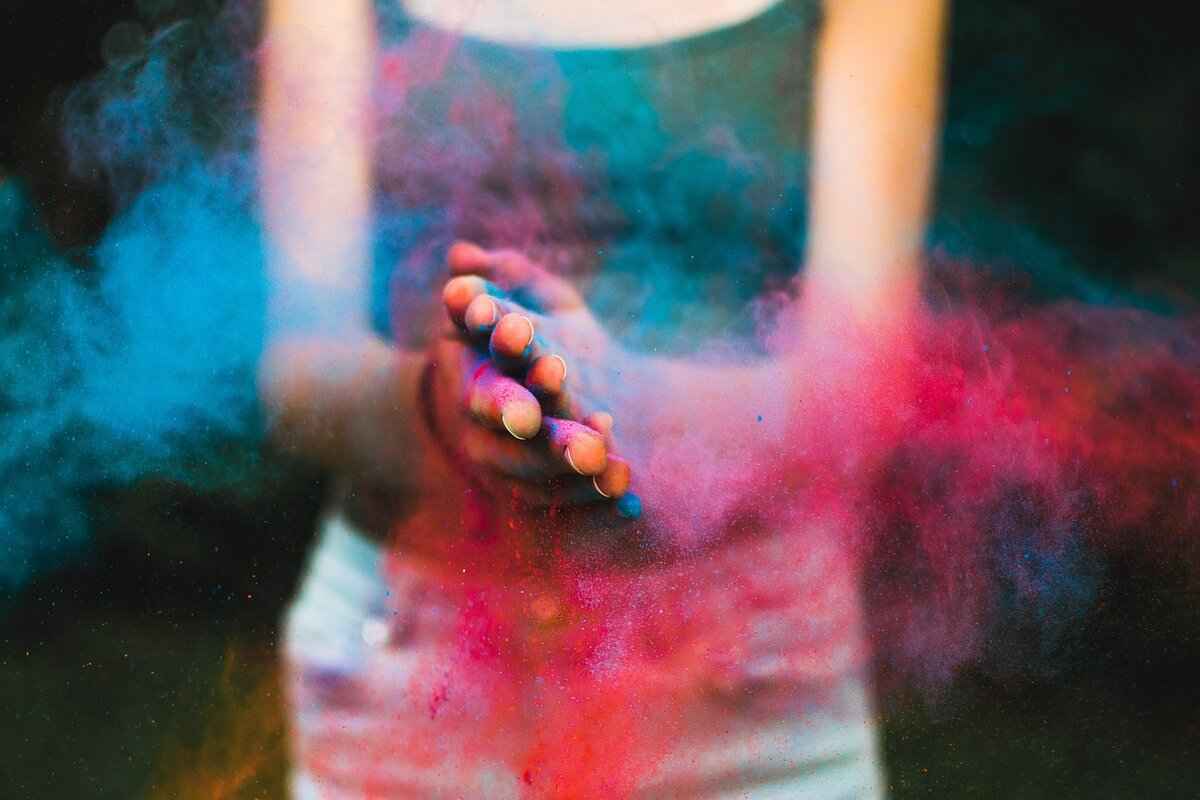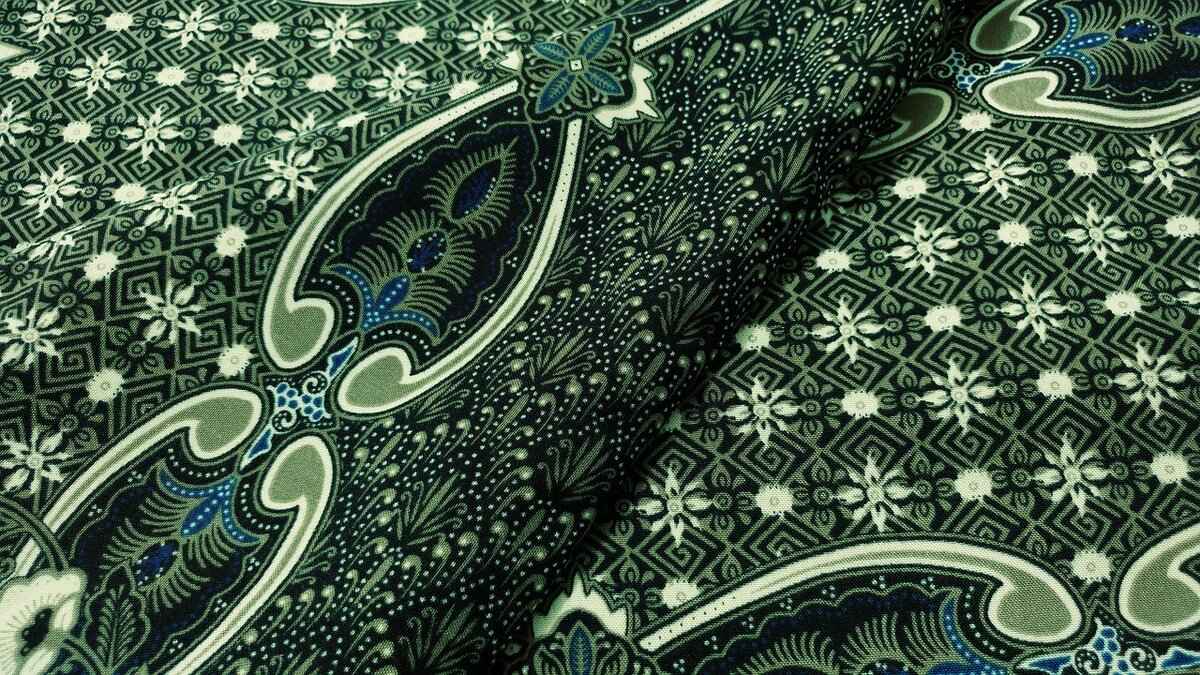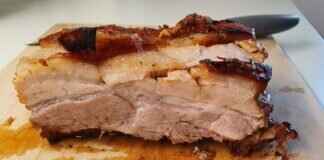This article delves into the rich heritage of Batik prints from Shantiniketan, exploring their cultural significance, unique artistic techniques, and the factors contributing to their global appeal in contemporary fashion and art.
The Origins of Batik Printing in Shantiniketan
The practice of Batik printing in Shantiniketan has deep historical roots, tracing back to traditional methods that have evolved into a modern art form. This evolution reflects the cultural identity of the region, where Batik serves not only as a craft but also as a representation of the local community’s heritage.
Understanding the Batik Printing Technique
The Batik printing process is intricate, involving various techniques and materials. Artisans use a combination of wax and dye to create stunning designs, showcasing their skill and creativity.
- Materials Used in Batik Production
- Natural Dyes vs. Synthetic Dyes
- Tools and Equipment for Batik Artists
Essential materials include high-quality fabrics and natural dyes that contribute to the vibrancy and durability of the final product.
Natural dyes are favored for their environmental benefits and unique color palettes, while synthetic dyes offer consistency and affordability.
Tools such as tjanting and various wax types are crucial for creating the detailed patterns characteristic of Batik.
Artistic Styles and Patterns in Batik
Shantiniketan Batik prints are renowned for their diverse styles and patterns, often inspired by nature and local folklore. These designs tell stories and reflect the cultural narratives of the region.
The Cultural Significance of Batik in Shantiniketan
Batik serves as a vital medium for storytelling, allowing artists to express personal and communal experiences. Local festivals and exhibitions play a pivotal role in promoting Batik art, providing artists with platforms to showcase their work.
Global Recognition of Shantiniketan Batik
In recent years, Shantiniketan Batik has gained international recognition, influencing global fashion trends while maintaining its cultural essence. Collaborations with international designers have showcased how traditional art forms can merge with contemporary styles.
Online Platforms and Social Media Influence
Social media has revolutionized the promotion and distribution of Shantiniketan Batik, enabling artisans to reach a wider audience and engage with global markets.
The Future of Shantiniketan Batik
Looking ahead, the future of Shantiniketan Batik faces challenges such as competition and market access. However, promoting sustainable practices and innovation can help preserve this traditional craft.
Challenges Facing Batik Artisans
Artisans must navigate various challenges, including the need for skill development and access to resources to ensure the survival of their craft.
Promoting Sustainable Practices
Emphasizing eco-friendly materials and methods is crucial for the sustainability of the Batik industry, benefiting both artisans and the environment.

The Origins of Batik Printing in Shantiniketan
Batik printing in Shantiniketan is a vibrant art form that encapsulates the rich cultural heritage of the region. This traditional craft has evolved over the years, transforming from its historical roots into a modern artistic expression that resonates with both local and global audiences.
Initially, Batik was introduced to the region through various cultural exchanges and artistic influences. The technique involves the use of wax to create intricate designs on fabric, which is then dyed to produce stunning patterns. This method has been passed down through generations, with artisans in Shantiniketan refining their skills to create unique pieces that reflect the area’s natural beauty and folklore.
One of the most significant developments in the evolution of Batik in Shantiniketan occurred during the early 20th century when the renowned poet and artist Rabindranath Tagore established the Visva-Bharati University. This institution became a hub for artistic experimentation, encouraging local artisans to explore and innovate within their craft. The Batik prints produced here began to incorporate contemporary themes while maintaining traditional techniques, thus creating a distinctive style that sets Shantiniketan apart.
As the art form gained recognition, it began to attract attention beyond the borders of India. The vibrant colors and intricate designs of Shantiniketan Batik prints became popular in fashion and home décor, appealing to a global market. The artisans’ ability to blend traditional motifs with modern aesthetics has ensured that Batik remains relevant and continues to thrive in contemporary art scenes.
In conclusion, the origins of Batik printing in Shantiniketan are deeply rooted in the region’s cultural identity. The evolution of this art form reflects a harmonious blend of tradition and modernity, showcasing the skill and creativity of local artisans. As Batik continues to gain international acclaim, it serves as a testament to the enduring legacy of Shantiniketan’s artistic landscape.

Understanding the Batik Printing Technique
Batik printing is a fascinating art form that has captivated audiences worldwide with its intricate designs and vibrant colors. This traditional method, originating from Indonesia, has found a unique expression in places like Shantiniketan, where artisans have refined the technique, blending cultural significance with artistic flair.
The process of Batik printing involves several meticulous steps, each contributing to the final masterpiece. First, artisans select high-quality fabrics, typically cotton or silk, which serve as the canvas for their designs. The choice of fabric is crucial, as it affects how well the dye adheres and the overall look of the finished product.
Next, a special wax is applied to the fabric using a tjanting tool. This tool allows for precise application, enabling artists to create intricate patterns and designs. The wax acts as a barrier, preventing dye from penetrating the fabric in those areas. Once the wax is applied, the fabric is dyed in vibrant colors, often using natural dyes derived from plants, minerals, or synthetic alternatives. The use of natural dyes is particularly valued for their eco-friendliness and the rich hues they produce.
After dyeing, the fabric is boiled to remove the wax, revealing the stunning patterns beneath. This process can be repeated multiple times with different colors, creating complex designs that showcase the skill and creativity of the artisan. The final product is not just a piece of fabric; it is a narrative woven into the very threads, reflecting cultural stories and personal expressions.
In conclusion, the Batik printing technique is a beautiful synthesis of artistry and tradition. It requires not only technical skills but also a deep understanding of materials and cultural significance, making each piece a unique representation of the artisan’s vision.
Materials Used in Batik Production
Batik printing is a traditional art form that combines cultural heritage with intricate craftsmanship. The materials used in this process are fundamental to achieving the vibrant and unique designs that characterize Batik. Understanding these materials provides insight into the quality and aesthetic appeal of the final product.
| Material | Description | Impact on Batik |
|---|---|---|
| Fabrics | Batik is typically printed on natural fabrics such as cotton, silk, and rayon. Each fabric type offers different textures and absorbency. | The choice of fabric significantly affects the vibrancy and durability of the prints. |
| Dyes | Dyes used in Batik can be natural (derived from plants, minerals, or insects) or synthetic. Natural dyes are often favored for their eco-friendliness. | Natural dyes provide rich, deep colors that are less harsh on the environment, enhancing the artistic expression in Batik. |
| Wax | Wax is a crucial component in the Batik process, used to resist dye on the fabric. | The application of wax creates intricate patterns by preventing dye from penetrating certain areas, leading to stunning designs. |
In addition to these primary materials, Batik artisans often utilize various tools such as tjanting tools for detailed designs and brushes for broader strokes. The combination of these elements contributes to the distinctive character of Shantiniketan Batik, making it not only a craft but also a form of artistic expression.
Conclusion: The materials used in Batik production play a vital role in determining the quality and vibrancy of the final prints. As artisans continue to innovate while respecting traditional methods, the rich tapestry of Batik art will undoubtedly thrive.
Natural Dyes vs. Synthetic Dyes
Batik printing, a traditional art form, utilizes various dyes to create vibrant and intricate designs. The choice between natural and synthetic dyes significantly influences not only the aesthetic quality of the prints but also their environmental impact.
Natural Dyes are derived from plants, minerals, and insects. They offer a wide range of colors and are often favored for their eco-friendly properties. These dyes are biodegradable and less harmful to the environment. For instance, indigo, extracted from the indigo plant, is renowned for its deep blue hue and has been used for centuries. The production process of natural dyes often involves less energy consumption and fewer chemical pollutants, making them a sustainable choice for Batik artisans.
On the other hand, synthetic dyes are chemically manufactured and provide a broader spectrum of colors at a lower cost. However, their production can lead to significant environmental concerns. The process often involves toxic chemicals that can contaminate water sources and harm aquatic life. Furthermore, synthetic dyes may not be as vibrant when applied to fabrics, leading to a preference for natural options among many artisans who prioritize quality and sustainability.
- Environmental Impact: Natural dyes are biodegradable, while synthetic dyes can pollute waterways.
- Color Range: Synthetic dyes offer a wider variety of colors compared to natural dyes.
- Cost: Synthetic dyes are generally cheaper, making them accessible for mass production.
- Health Considerations: Natural dyes are less likely to cause allergic reactions compared to some synthetic alternatives.
The appeal of eco-friendly practices has led many Batik artists to return to traditional methods, favoring natural dyes. This shift not only enhances the quality of the art but also aligns with a growing global movement towards sustainability and environmental responsibility. As consumers become more conscious of their purchasing choices, the demand for natural dyes in Batik printing is likely to increase, promoting a healthier planet and preserving traditional craftsmanship.
Tools and Equipment for Batik Artists
Batik art is a fascinating and intricate craft that has captivated audiences around the world. To create the stunning designs that define this art form, Batik artists rely on a variety of essential tools and equipment. Understanding these tools is crucial for appreciating the skill and artistry involved in Batik production.
- Tjanting Tool: This is perhaps the most iconic tool used in Batik. It consists of a small copper bowl attached to a wooden handle, allowing artists to draw intricate patterns with hot wax. The precision of the tjanting tool enables fine details that are characteristic of Batik designs.
- Wax: The type of wax used is critical in Batik. Artists typically use a mixture of beeswax and paraffin wax, as this combination allows for smooth application and easy removal during the dyeing process.
- Fabrics: The choice of fabric is also vital. Cotton and silk are commonly used due to their ability to absorb dyes effectively, resulting in vibrant colors and detailed patterns.
- Dyes: Natural or synthetic dyes can be used in Batik art. Each type of dye offers different qualities, with natural dyes often being favored for their eco-friendliness and unique hues.
- Brushes and Stamps: Brushes are used for applying dye and creating textures, while stamps can be employed to create repetitive patterns quickly.
Each tool plays a significant role in the overall process of Batik creation. The tjanting tool allows for the meticulous application of wax, which is essential for creating the designs that will resist dye. The wax itself acts as a barrier, preventing dye from penetrating certain areas of the fabric, thus preserving the original color of the material.
In conclusion, the tools and equipment utilized by Batik artists are fundamental to the craft. From the tjanting tool to the choice of fabric and dyes, each element contributes to the intricate beauty of Batik prints. Understanding these tools not only enhances appreciation for the art form but also highlights the skill and dedication of the artisans behind each piece.
Artistic Styles and Patterns in Batik
The art of Batik in Shantiniketan is a vibrant tapestry that weaves together cultural narratives, nature, and folklore. This traditional textile art form has evolved over the years, showcasing a variety of artistic styles and patterns that reflect the rich heritage of the region. Each Batik print tells a story, often inspired by the surrounding landscapes and the rich tapestry of local myths.
One of the most striking features of Shantiniketan Batik is its use of natural motifs. Many designs incorporate elements such as flowers, leaves, and animals, symbolizing the connection between the community and its environment. For instance, intricate patterns may depict the lotus flower, which is often associated with purity and beauty in Indian culture. These natural representations are not merely decorative but serve as a reflection of the local ethos.
Moreover, the influence of folklore is evident in many Batik prints. Stories from ancient texts and local legends are transformed into visual art, allowing artisans to express their cultural identity. For example, designs may illustrate scenes from traditional tales, bringing to life characters and events that resonate with the community’s collective memory.
| Artistic Style | Description |
|---|---|
| Floral Patterns | Intricate designs featuring local flora, symbolizing beauty and nature. |
| Geometric Shapes | Abstract forms that represent harmony and balance, often used in modern interpretations. |
| Folklore Motifs | Designs inspired by local legends and stories, adding a narrative element to the prints. |
The techniques used in creating these patterns are equally significant. Artisans employ a wax-resist dyeing method, where patterns are drawn with hot wax on fabric before dyeing. This technique allows for intricate designs that are both vibrant and durable. The final product is a testament to the skill and creativity of the artisans, who blend traditional methods with contemporary aesthetics.
In conclusion, the artistic styles and patterns found in Shantiniketan Batik are a celebration of the region’s cultural narratives and natural beauty. These prints not only serve as a medium of artistic expression but also preserve the stories and traditions of the community, making them an invaluable part of India’s artistic heritage.

The Cultural Significance of Batik in Shantiniketan
Batik, a traditional art form, holds profound cultural significance in Shantiniketan, a vibrant town in West Bengal, India. This textile art is not merely a craft; it is a medium for storytelling that encapsulates the rich heritage and traditions of the local community. The intricate designs and patterns of Batik prints often narrate tales of nature, folklore, and the cultural narratives of the region.
In Shantiniketan, Batik serves as an important vehicle for expression among local artists. Each piece of art is imbued with personal and communal stories, reflecting the artist’s connection to their surroundings. The use of natural motifs and colors resonates with the community’s deep-rooted relationship with nature, making Batik a representation of their identity.
Moreover, local festivals and exhibitions play a crucial role in promoting Batik art. These events not only provide artists with a platform to showcase their work but also engage the broader community in celebrating their cultural heritage. Through these gatherings, the vibrant colors and intricate designs of Batik become a source of pride and unity among the people.
As Batik continues to gain recognition beyond local borders, it has become a symbol of cultural pride for Shantiniketan. The global appeal of this art form lies in its ability to blend traditional techniques with contemporary aesthetics, thereby attracting attention from international fashion and art circles. This fusion not only elevates the status of Batik but also ensures that its cultural roots remain intact.
In conclusion, the cultural significance of Batik in Shantiniketan extends far beyond its aesthetic value. It is a living testament to the community’s heritage, a means of storytelling, and a bridge connecting the past with the present. As the world embraces this unique art form, it is essential to recognize and celebrate its origins, ensuring that the stories woven into each Batik print continue to thrive for generations to come.
Batik as a Form of Expression
Batik, a traditional fabric dyeing technique originating from Indonesia, has found a unique voice in Shantiniketan, India. This ancient art form has evolved into a medium through which local artists express their personal and communal narratives. Each piece of Batik is not just a textile; it is a canvas that tells stories deeply rooted in cultural heritage, nature, and the artist’s individual experiences.
Local artisans utilize Batik to convey their personal stories and reflect the communal identity of their surroundings. Through intricate patterns, colors, and motifs, artists weave tales of everyday life, folklore, and historical events, creating a rich tapestry of meaning. For instance, a design might symbolize the changing seasons, representing hope and renewal, or depict local flora and fauna, celebrating the region’s natural beauty.
The process of creating Batik is as expressive as the final product. Artists often engage in a meditative practice as they apply wax to fabric, carefully planning each stroke. This technique allows for a deep connection between the artist and their work, enabling them to infuse their emotions and thoughts into every piece. The act of creating becomes a form of self-exploration and cultural dialogue, allowing the artist to communicate their innermost feelings while also preserving their community’s heritage.
Moreover, Batik serves as a platform for social commentary. Artists often tackle contemporary issues through their designs, addressing themes such as environmental conservation, social justice, and cultural identity. This ability to merge traditional techniques with modern narratives enhances the relevance of Batik in today’s world, making it a dynamic form of artistic expression.
In conclusion, Batik in Shantiniketan is more than just a craft; it is a powerful medium through which local artists articulate their stories and connect with the broader community. By embracing both personal and communal themes, Batik continues to thrive as a form of artistic expression, resonating with audiences around the globe.
The Role of Festivals and Exhibitions
Local festivals and exhibitions play a crucial role in the promotion of Batik art, serving as vibrant platforms where artists can showcase their talents and engage with diverse audiences. These events not only celebrate the rich heritage of Batik but also provide opportunities for artists to connect with potential buyers, art enthusiasts, and fellow creators.
One of the primary benefits of these festivals is the visibility they offer to local artists. By participating in exhibitions, artists can display their unique creations, ranging from traditional designs to contemporary interpretations of Batik. This exposure is vital in attracting attention from art collectors and fashion designers, thereby expanding their market reach.
Moreover, festivals often feature workshops and live demonstrations, allowing attendees to witness the intricate process of Batik printing firsthand. This interactive experience not only educates the public about the art form but also fosters a deeper appreciation for the skills and techniques involved. As visitors engage with the artists, they gain insights into the cultural significance of Batik, enhancing their understanding and respect for this traditional craft.
Furthermore, these events create a sense of community among artists and art lovers. By gathering in a shared space, participants can exchange ideas, collaborate on projects, and inspire one another. This collaborative environment is essential for the growth and evolution of Batik art, encouraging innovation while staying rooted in tradition.
In conclusion, local festivals and exhibitions are indispensable in promoting Batik art. They not only provide artists with the necessary platforms to showcase their work but also facilitate meaningful interactions that enrich both the creators and the audience. As these events continue to flourish, they ensure that the legacy of Batik art thrives and evolves in the modern world.

Global Recognition of Shantiniketan Batik
The Shantiniketan Batik has emerged as a remarkable symbol of cultural heritage, gaining significant international acclaim in recent years. This unique art form not only reflects the rich traditions of India but has also made a notable impact on global fashion trends and art movements. The intricate designs and vibrant colors of Shantiniketan Batik resonate with audiences worldwide, making it a sought-after choice for contemporary fashion enthusiasts.
One of the key factors contributing to the global recognition of Shantiniketan Batik is its authenticity. Each piece is crafted using traditional methods that have been passed down through generations, ensuring that the cultural essence remains intact. Artisans utilize natural dyes and hand-printing techniques, which not only enhance the beauty of the fabric but also promote sustainable practices. This commitment to preserving traditional art forms while adapting to modern aesthetics has positioned Shantiniketan Batik as a frontrunner in the global textile market.
Furthermore, collaborations between local artisans and international fashion designers have played a crucial role in elevating the profile of Shantiniketan Batik. These partnerships allow for a fusion of traditional craftsmanship with contemporary design, resulting in unique collections that appeal to a diverse audience. Such collaborations have not only provided a platform for artisans to showcase their work but have also introduced the world to the beauty of Shantiniketan Batik.
In addition, the rise of online platforms and social media has significantly contributed to the global outreach of Shantiniketan Batik. Artists can now share their creations with a worldwide audience, enabling them to connect with potential buyers and art enthusiasts. This digital presence has opened up new avenues for marketing and distribution, ensuring that the art form continues to thrive in a competitive landscape.
In conclusion, the global recognition of Shantiniketan Batik is a testament to its cultural significance and artistic merit. As it continues to influence fashion trends and art movements, it remains essential to preserve the traditional techniques that define its unique identity. The future of Shantiniketan Batik looks promising, with opportunities for innovation and sustainability at the forefront.
Collaborations with International Designers
The collaboration between Shantiniketan Batik artists and international designers has emerged as a fascinating intersection of traditional craftsmanship and contemporary fashion. This synergy not only revitalizes the ancient art of Batik but also introduces it to a global audience, enhancing its appeal and relevance in today’s fashion landscape.
At the heart of these collaborations is the unique artistic heritage that Shantiniketan offers. Batik, with its intricate patterns and vibrant colors, tells stories deeply rooted in the local culture and nature. When international designers incorporate these elements into their collections, they create a fusion of styles that resonates with diverse audiences. This blending of traditional and modern aesthetics results in garments that are not only visually stunning but also rich in meaning.
For instance, renowned fashion houses have partnered with Shantiniketan artists to produce limited-edition collections that highlight the meticulous Batik printing techniques. These collaborations often involve workshops where designers learn about the traditional methods, such as the use of wax and natural dyes, ensuring authenticity in the final product. This hands-on approach fosters a deeper appreciation for the craft and promotes sustainable practices within the fashion industry.
Moreover, these partnerships have significant economic implications for local artisans. By gaining exposure through international platforms, Shantiniketan Batik artists can access wider markets, leading to increased sales and greater recognition of their work. This not only supports their livelihoods but also contributes to the preservation of the Batik tradition.
In conclusion, the collaborations between Shantiniketan Batik artists and international designers exemplify the potential of traditional art forms to thrive in a contemporary context. By merging age-old techniques with modern design sensibilities, these partnerships not only enhance the global appeal of Batik but also ensure that the cultural narratives embedded in these prints continue to be celebrated and appreciated worldwide.
Online Platforms and Social Media Influence
The advent of online platforms and social media has revolutionized the way traditional crafts, such as Shantiniketan Batik, are promoted and distributed. Artisans who once relied solely on local markets now have the opportunity to showcase their exquisite creations to a global audience.
Through platforms like Instagram, Facebook, and dedicated online marketplaces, artisans can share their work visually, attracting potential buyers from around the world. This visual storytelling not only highlights the intricate designs of Batik but also allows artisans to connect with customers on a personal level, sharing their stories and the cultural significance behind each piece.
Furthermore, the use of hashtags and targeted marketing strategies enables these artisans to reach specific demographics interested in sustainable fashion and traditional arts. By leveraging social media, they can engage with communities that value eco-friendly practices, thus expanding their market reach.
| Platform | Benefits for Artisans |
|---|---|
| Visual showcase of products, direct customer engagement | |
| Community building, event promotion | |
| Etsy | Access to niche markets, e-commerce support |
Moreover, the rise of e-commerce has made it easier for artisans to sell their products directly to consumers, bypassing traditional retail channels. This shift not only increases their profit margins but also allows them to maintain control over their brand and storytelling.
In conclusion, the impact of online platforms and social media on the promotion and distribution of Shantiniketan Batik is profound. By embracing these modern tools, artisans not only preserve their heritage but also thrive in a competitive global market. Their ability to reach wider audiences ensures that the beauty and cultural significance of Batik continue to resonate with people around the world.

The Future of Shantiniketan Batik
As the world evolves, Shantiniketan Batik faces both exciting opportunities and significant challenges. The future of this traditional art form hinges on its ability to adapt to contemporary demands while remaining true to its roots. In this discussion, we will explore the prospects of Shantiniketan Batik through the lenses of sustainability, innovation, and the critical need for preserving traditional practices.
Sustainability is becoming increasingly important in today’s world, especially in the textile industry. Batik artisans are recognizing the need to incorporate eco-friendly materials and processes into their work. By utilizing natural dyes and sustainable fabrics, artisans can create beautiful products that resonate with environmentally conscious consumers. This shift not only helps the environment but also adds value to the Batik art form, appealing to a global market that prioritizes sustainability.
Innovation plays a pivotal role in the future of Shantiniketan Batik. Artisans are experimenting with new techniques and designs, merging traditional methods with contemporary aesthetics. This innovation can attract younger generations who seek unique and fashionable items. By leveraging modern technology, such as digital marketing and e-commerce platforms, artisans can reach a wider audience, ensuring the survival and growth of this cherished craft.
However, amidst these advancements, it is crucial to emphasize the importance of preserving traditional practices. The essence of Shantiniketan Batik lies in its rich cultural heritage, and maintaining these practices is vital for the identity of the artisans and the community. Workshops and educational programs can play a significant role in passing down knowledge to future generations, ensuring that the art form continues to thrive.
In conclusion, the future of Shantiniketan Batik is promising, provided that artisans embrace sustainability and innovation while honoring their traditional roots. By doing so, they can ensure that this beautiful art form not only survives but flourishes in a rapidly changing world.
Challenges Facing Batik Artisans
The vibrant world of Batik art in Shantiniketan is not without its challenges. As artisans strive to maintain their craft, they encounter various obstacles that threaten the survival and growth of this traditional art form. Understanding these challenges is essential for fostering a sustainable future for Batik artisans.
- Intense Competition: The rise of mass-produced textiles has led to increased competition for local artisans. Cheaper alternatives often flood the market, making it difficult for artisans to compete on price while maintaining the quality and authenticity of their work.
- Limited Market Access: Many Batik artisans struggle with limited access to broader markets. While local demand exists, reaching international buyers can be challenging due to factors such as lack of marketing knowledge, inadequate online presence, and logistical hurdles.
- Need for Skill Development: To keep pace with changing trends and techniques, there is a pressing need for skill development among artisans. Workshops and training programs can help enhance their skills, but access to such resources is often limited.
- Preservation of Traditional Techniques: As modern trends influence art, there is a risk of losing traditional Batik techniques. Artisans face the challenge of balancing innovation with the preservation of their cultural heritage.
- Economic Instability: Fluctuations in the economy can affect the purchasing power of consumers, impacting sales for artisans. Economic challenges can lead to a decline in demand for handmade products, further threatening the viability of Batik art.
Addressing these challenges requires a concerted effort from various stakeholders, including government support, community initiatives, and consumer awareness. By fostering an environment that encourages sustainability and innovation, the future of Batik artisans in Shantiniketan can be secured.
Promoting Sustainable Practices
within the Batik industry is essential for ensuring that this traditional art form not only survives but thrives in a modern context. As the demand for eco-friendly products increases, it becomes crucial to focus on eco-friendly materials and methods that benefit both artisans and the environment. This approach not only preserves the rich cultural heritage of Batik but also supports the livelihoods of local artisans.
One of the most significant aspects of promoting sustainability in the Batik industry is the use of natural dyes. Unlike synthetic dyes, which can contain harmful chemicals, natural dyes are derived from plants, minerals, and other organic materials. This not only reduces environmental pollution but also ensures that the final products are safe for consumers. By transitioning to natural dyes, artisans can create vibrant and unique designs while minimizing their ecological footprint.
In addition to using eco-friendly dyes, the choice of materials plays a vital role in sustainable practices. Artisans can opt for organic cotton, bamboo, or other sustainable fabrics that are grown without harmful pesticides or fertilizers. This not only promotes healthier farming practices but also supports the local economy by sourcing materials from nearby producers.
Moreover, adopting traditional Batik methods that require less energy and water can significantly enhance sustainability. Techniques such as hand-dyeing and manual printing not only preserve the authenticity of Batik but also reduce reliance on industrial processes that contribute to environmental degradation.
By promoting these sustainable practices, the Batik industry can create a positive impact on both the environment and the livelihoods of artisans. Consumers are increasingly seeking products that align with their values, and by prioritizing sustainability, the Batik industry can attract a broader audience while ensuring its longevity. In conclusion, embracing eco-friendly materials and methods is not just a trend but a necessary evolution for the Batik industry, fostering a harmonious relationship between art, culture, and the environment.
Frequently Asked Questions
- What is Batik printing?
Batik printing is an ancient art form that involves applying wax to fabric to create intricate patterns. The process allows artisans to create beautiful designs that are often inspired by nature and cultural narratives.
- How did Batik printing originate in Shantiniketan?
Batik printing in Shantiniketan has deep historical roots, evolving from traditional practices into a modern art form that showcases the region’s rich cultural identity and artistic heritage.
- What materials are used in Batik production?
Artisans use various materials, including cotton or silk fabrics and both natural and synthetic dyes, to create vibrant Batik prints. Each material contributes uniquely to the quality and aesthetic of the final product.
- Are natural dyes better than synthetic dyes?
Natural dyes are often considered more eco-friendly and sustainable compared to synthetic dyes. They offer a unique aesthetic but may have different durability and color-fastness properties.
- How has Shantiniketan Batik gained global recognition?
Shantiniketan Batik has gained international fame through collaborations with global designers and the influence of social media, helping artisans reach wider audiences and integrate traditional art into modern fashion.
- What challenges do Batik artisans face today?
Challenges include competition from mass-produced textiles, limited market access, and the need for skill development. These factors can threaten the survival of this beautiful art form.














